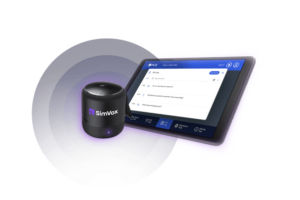Kyoto Kagaku | KK America
KKAmerica, aka Kyoto Kagaku American, is a division of Kyoto Kagaku, a Japanese company headquartered in Kyoto that specializes in high fidelity simulators and training equipment for healthcare education and training. Established in post-war Japan in 1948, Kyoto Kagaku is now one of the leading manufacturers of medical simulators and nursing simulators, in addition to training models and phantoms used for ultrasound and radiology instruction and learning.
During the KKAmerica’s early stages, the company was heavily involved with efforts to improve cultural heritage protection. This led to the successful development of techniques to reproduce and maintain historical artifacts with synthetic material. Contributing to society through education, culture and service, Kyoto Kagaku American’s mastery of synthetic material led to the production of its first synthetic manikin in 1930.
Synthetic manikins produced by KK America have become accepted worldwide and have contributed to various levels of scientific education, academic research and the rapidly expanding world of simulation overall. Additionally, the company tries to produce products that meet the needs of educational equipment that are able to effectively reveal the complexities of the human body. Another goal of Kyoto Kagaku is to produce educational products that help present medical knowledge as a tangible and accessible resources.
Sponsored Content:
Carefully handcrafted to ensure the highest quality and attention to detail, the synthetic manikins produced by Kyoto Kagaku are designed to be compatible with various medical devices for a more realistic learning experience. The company is also constantly incorporating new mechanics and ingredients to pursue state-of-the-art creations, progressing toward a new generation of simulators.
This push to advance manikin production standards and features has led to KKAmerica’s incorporation of new techniques of different fields to achieve the most useful educational tools for medical training. The mission has further expanded Koyoto Kagaku’s business activities range from fundamental science education in secondary school education to specialized fields in higher education and medicine.
Beginning with the creation of an anatomical model in 1909, Kyoto Kagaku American now offers training models and x-ray and ultrasound phantoms. Most recently, the company released the “Physiko” physical assessment training model in 2007, and the Breast Examination Phantom in 2010.
Sponsored Content:
As of June 1, 2015, the North and South America branch of Kyoto Kagaku Co., Ltd officially changed to a subsidiary company with a new name, Kyoto Kagaku America, Inc. Now, the United States headquarters is located in Torrance, Calif. Today, the company’s simulators are distributed by the companies Limbs & Things and 3-Dmed. KKAmerica phantoms are distributed by Supertech Inc., and anatomical models are distributed by Global Technologies.
KK America Products
Kyoto Kagaku America offers three types of full-body manikins, including an adult, newborn/pediatric and geriatric manikins. The adult versions of the products are the Physical Assessment Simulator “Physiko Plus,” Bathing and In-patient Care Simulator (male), Patient Care Simulator “Cherry” and the Patient Care Simulator “Yaye.”
Physiko, produced with the collaboration of the University of Illinois, Chicago, features twelve preset examples of out-patients with common medical complaints. The model is designed to facilitate training in assessment procedures, assessment skills as well as hands-on knowledge of crucial abnormal findings. New patients with a customized scenario can be created by selecting from the built-in data.
Then, the Bating and In-patient Care Simulator represents an elderly whole body manikin for basic patient care. This care includes training for various procedures essential for elderly patient care, such as bathing, hair care, positioning and oral care. Alternatively, the Patient Care Simulator “Cherry” represents a basic full-body, nursing manikin for training on day-to-day patient care needs within the realm of introductory nursing. Lastly, Patient Care Simulator “Yaye” brings uninterrupted training flow in community care and in-hospital procedures by featuring more than 40 training skills. This product serves an array of trainees from entry-level learners to experienced nurses.
Kyoto Kagaku’s newborn and pediatric manikins include a Pediatric Patient Care Simulator, Newborn Vital Signs Examination Simulator, Newborn Bathing and Nursery Care Model (male and female options) and Care Models (7 to 10 months old and 5 to 6 years old options). These manikins are designed to offer a wide variety of training features in day-to-day pediatric patient care. This care can include learning how to position and handle a young patient, bathing and transportation instruction, how to facilitate airway suction, tube feeding management and catheter placement.
As for geriatric manikins, KKAmerica offers a Bathing and In-patient Care Simulator (male) and the Basic Patient Care Simulator “Keiko.” The Bathing and In-patient Care Simulator facilitates training for various procedures essential for elderly patient care, such as bathing, hair care, positioning and oral care. Basic Patient Care Simulator “Keiko” reaches a wider range of trainees, including home-care nurses and caregivers, and provides quality training for trainees and professionals who support long term care of patients in community and hospital.
Within Kyoto Kagaku America’s task trainer selection are options designed for physical examination, patient care, injection and puncture, emergency, midwifery and other specialties. These other specialties include a suture evaluation system, a DAM simulator training model and evaluation system, a laparoscopic evaluation system and a bronchoscopy model.
Created for radiology and ultrasound, Kyoto Kagaku offers products for ultrasound examination, ultrasound procedural skills, ultrasound QA, diagnostic radiology, dosimetry and radiotherapy, MRI and nuclear medicine and optional parts for phantoms. The anatomical model products are made to represent either skeletons and skills, the muscular system or organs and systems. For example, skeleton and skull options include a lumbar spine model, a tract and reflection of spiral nerve model and a circulatory system with skeleton model.
The muscular system products include a human anatomy torso (dual sex) and dissectible arm musculature model. Organs and systems products include the nervous and circulatory system, tongue and larynx model, head cross section model, cerebral arteries, bronchus, pulmonary artery and veins model, coronary artery and conducting system model, nervous system model, multi-colored brain model, eye anatomy model, ear anatomy model, heart anatomy model and more.
The company has a full link library available online for easy product and service research. For more information on Kyoto Kagaku American website!
KKAmerica Latest News

New Realistic ‘Mikoto’ 3D Printed Medical Simulator Robot Developed in Japan
Sponsored Content:















